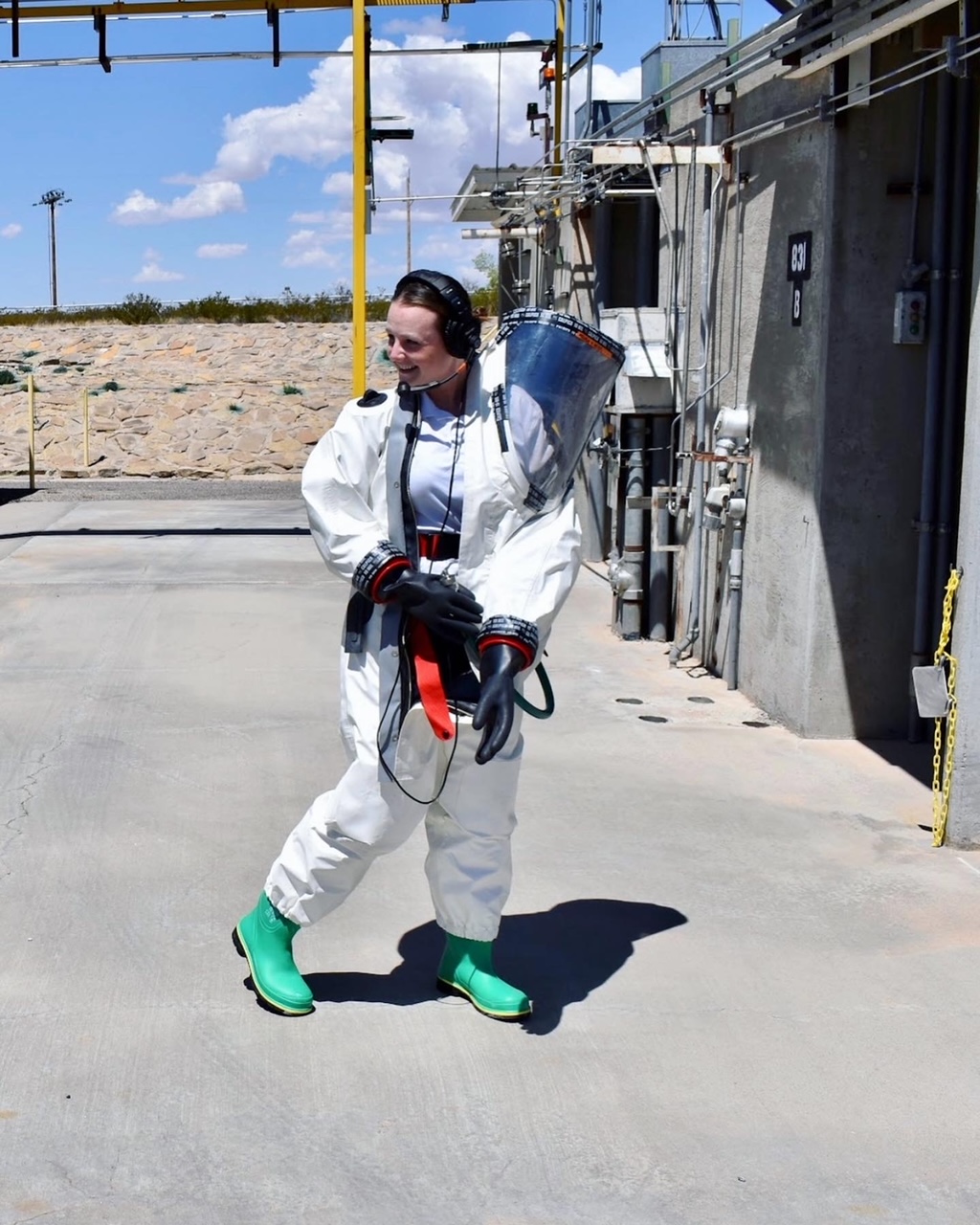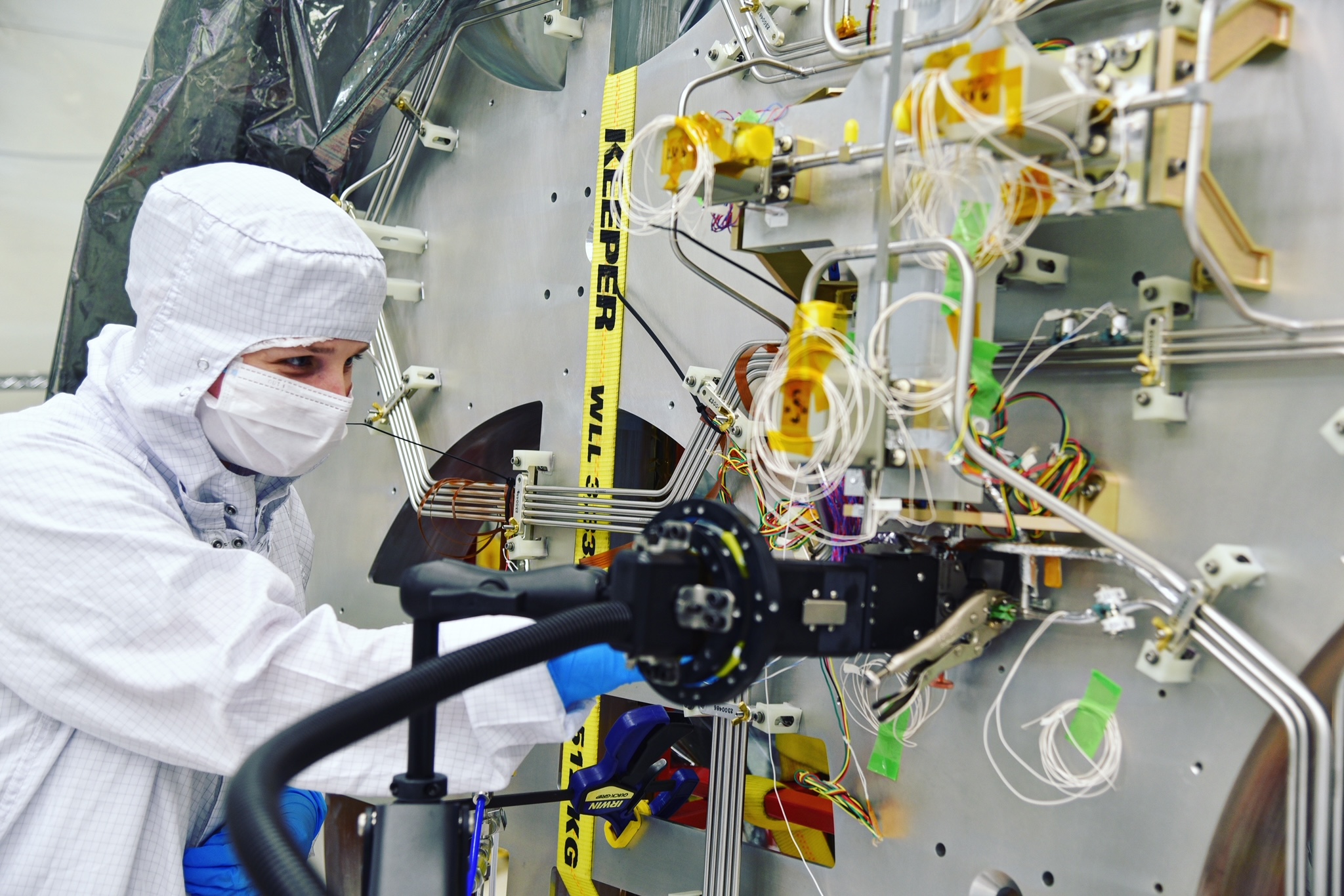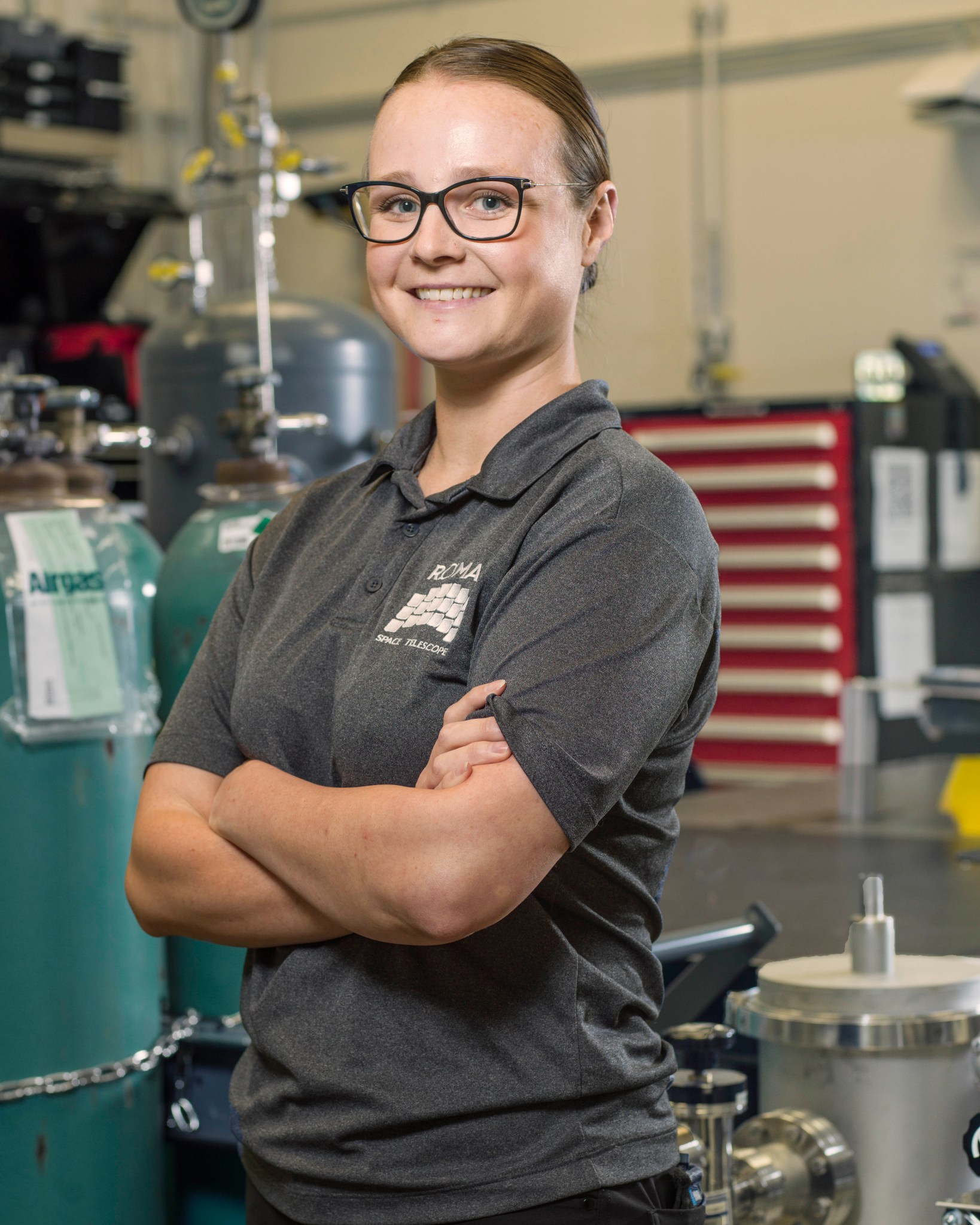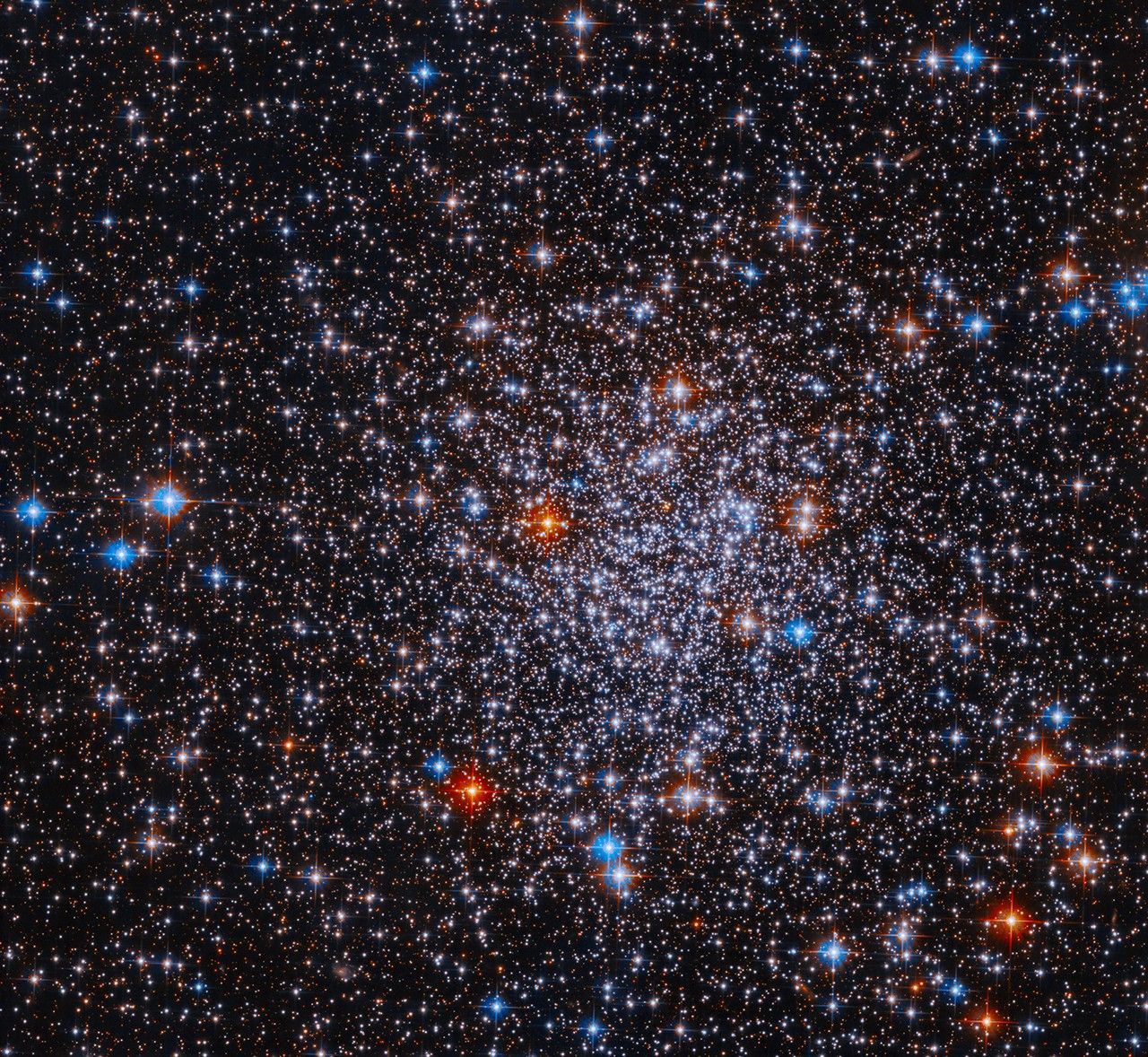Melissa Harris is an engineer working on the propulsion system for the Nancy Grace Roman Space Telescope.
Name: Melissa Harris
Title: Integration and Testing Lead for Nancy Grace Roman Space Telescope Propulsion Subsystem
Organization: Propulsion Branch (Code 597.0)
Melissa Harris is an engineer working on the propulsion system for the Nancy Grace Roman Space Telescope. Roman, which is projected to launch by May 2027, will shed light on many topics in infrared astrophysics that have thus far been shrouded in mystery. But before Roman can do that, it needs to get to a precise location 1 million miles from Earth. Harris is helping make sure Roman gets there.
In your role, how do you contribute to the Nancy Grace Roman mission?
I am with the propulsion group. The propulsion system is the fuel system, which you can think of as being similar to the one in your car. We get the spacecraft where it needs to go and help it to stay on trajectory so its instruments can do their job. My role specifically is to lead integration and testing. I create and work on a plan for how we will build the subsystem. There are a few moving parts to it, so it’s important I stay on top of the schedule and think of unique ways to make us more efficient. I know when doing something now can save us six months down the road.
What got you interested in engineering?
When I was younger, I loved the process of taking my toys apart and knowing how to put them back together. My dad does oil heating, and I’d tag along and hold the flashlight while he fixed the boiler, so that sparked the interest. I took an elective astronomy class in high school, and the teacher was one of the best I’ve ever had. We would go to the beach with his telescope, and he would point out all the constellations. His ability to make it understandable and tangible excited me. I started thinking I could actually get involved in this. You hear about NASA when you’re younger and think, “I’m not a rocket scientist. I don’t get straight A’s.” But he just sparked something in me. Ever since high school, I thought, “I’m gonna try.”
Then I went to Massachusetts Maritime Academy and worked in the engine room on ships for class, so it’s always been in me – figuring out how things work and fixing them. My degree is in facilities engineering, which is related to power plants, for example. However, ever since freshman year, I had my eye on NASA. In my eyes, engineering is engineering, and if you have the brain to be an engineer, you can do all facets of building. I applied to probably 50 internships every semester. I was accepted on my last one. So it was difficult to get here, but when it comes to the work itself, it was an easy transition.

We’re approaching International Women in Engineering Day on June 23. Tenacity was clearly a big part of your journey. What advice would you give to young women involved in STEM?
Be confident in who you are. You don’t need to fit a mold in any workforce, especially engineering. I am going to be who I am, and I’m also going to be an engineer. Imposter syndrome is a problem, maybe even more so for women in the STEM world, but you deserve to be here. A trick I found is, don’t be afraid to ask questions. When I started six years ago, I would ask people, “Can you teach me what you’re doing?” It goes a really long way in gaining trust.
Roman is set to unravel so many enigmas. Is there one potential discovery that excites you most?
The fact we are even looking for dark matter absolutely blows my mind. Discovering the unexpected is what I like most about what we do.
What is your favorite thing about working for NASA?
I look forward to what I do every day, and I know it is going to have an impact way beyond my comprehension. The part I have in the Roman mission is going to get that telescope to where it needs to be and discover some amazing things.
Bonus question! If you were a part of the Nancy Grace Roman Telescope hardware itself, which would you be?
It’s a tough choice, but I’ll say the engines because they are going to get Roman where it needs to go.
By Nora Lowe
NASA’s Goddard Space Flight Center, Greenbelt, Md.
Conversations With Goddard is a collection of Q&A profiles highlighting the breadth and depth of NASA’s Goddard Space Flight Center’s talented and diverse workforce. The Conversations have been published twice a month on average since May 2011. Read past editions on Goddard’s “Our People” webpage.




























